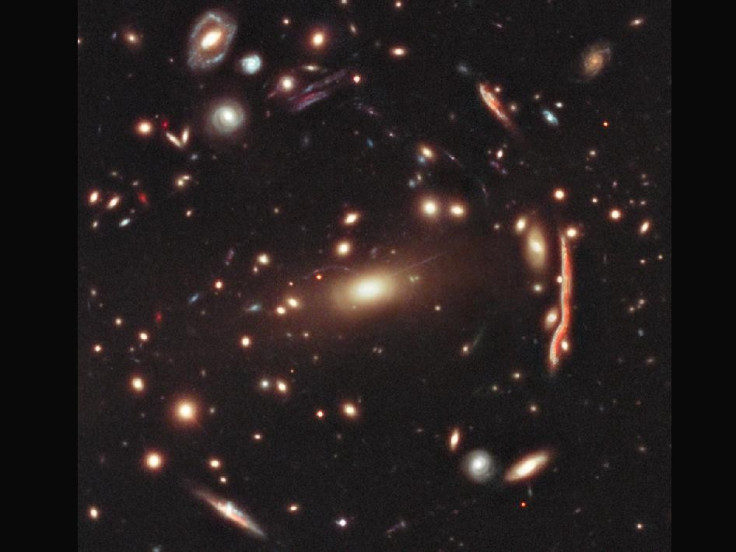Dark Matter Detected? Astronomers Discover Mysterious Signal With Potential to Explain Mass of Entire Universe

Astrophysicists have discovered an unusual signal through the analysis of light from distant clusters of galaxies, which could provide evidence for the theory of dark matter.
Scientists at Harvard University detected a discharge line which they have not yet managed to explain, while analysing X-ray radiation.
The signal is centered around an energy of 3.56 keV that does not appear to be associated with any known element or chemical reaction, but the researchers have suggested it could be the deterioration of dark matter.
If proven, this could be the first direct evidence that the matter, which is currently a hypothesis that accounts for gravitational affects that appear to be the result of invisible mass, actually exists.
Space.com explains that when observing a galaxy cluster, the amount of mass it contains can be determined by the light bent around it.
"The greater the effect on passing light beams, the greater the space-time warping, the greater the cluster's mass," the website explains.
Yet a significant amount of mass appears to be "invisible" - the proposed dark matter - as the amount of visible mass, or "luminous matter" they contain (stars, gas, and dust), always falls short of the cluster's space-time warping mass.
Dark matter is estimated to constitute 84.5% of the total matter in the universe.
The space between galaxies in clusters is filled with hot gases that have accumulated from billions of years of supernova explosions.
The X-rays generated by the gases can be studied by X-ray telescopes, such as Nasa's Chandra X-ray Observatory. Yet in the most recent study, by the Harvard-Smithsonian Center for Astrophysics, the scientists unearthed an X-ray signal that is so-far unexplainable.
The team have analysed 73 clusters, in which the same signal has appeared.
One explanation, as reported by Universe Today, could be that the scientists have detected the specific X-ray emission from the decay of a "sterile neutrino".
This is a hypothesised particle that does not interact with any of the fundamental interacts of the Standard Model of particle physics, except gravity - and is a "significant dark matter candidate", according to Nasa.
"We have a lot of work to do before we can claim, with any confidence, that we've found sterile neutrinos," said study co-author Maxim Markevitch, of Nasa's Goddard Space Flight Center. "But just the possibility of finding them has us very excited."
The authors note that even if this interpretation is proven correct, the study does not mean that all of dark matter is composed of these particles.
"Our next step is to combine data from Chandra and JAXA's Suzaku mission for a large number of galaxy clusters to see if we find the same X-ray signal," said co-author Adam Foster, of the Centre for Astrophysics.
"There are lots of ideas out there about what these data could represent. We may not know for certain until Astro-H launches, with a new type of X-ray detector that will be able to measure the line with more precision than currently possible."
© Copyright IBTimes 2025. All rights reserved.






















